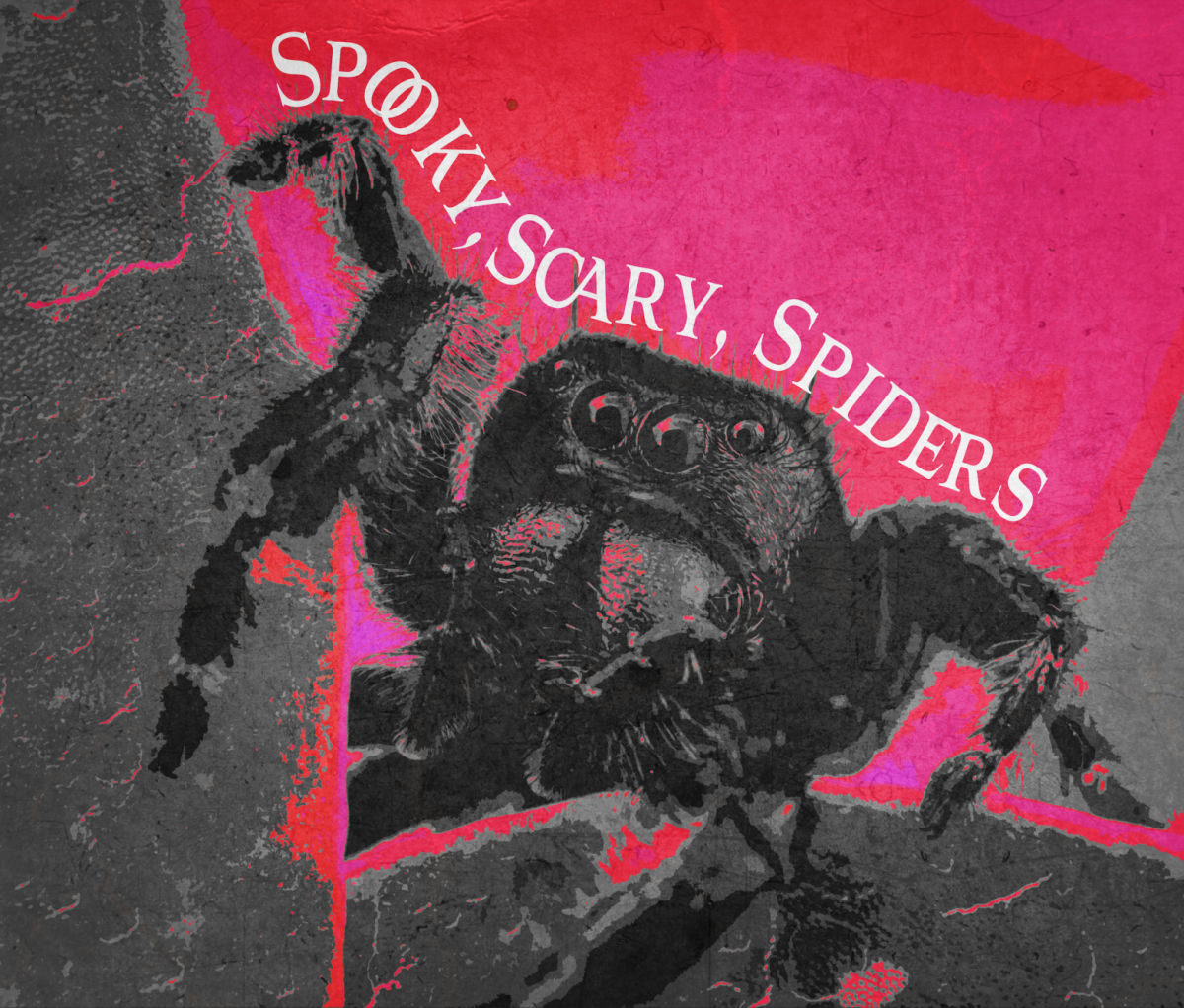Vampires, zombies and werewolves are just some of the frightening Halloween symbols that are fictional. However, there is one very real creature that incites just as much fear in many people: spiders.
Spiders, which are arthropods from the order Araneae, are known for having characteristics that are considered scary to the general public, such as eight legs, sticky webs and venomous fangs. Clyde Sorenson, an entomology professor, explained this fear is a combination of innate and learned factors.
“There’s evolutionary value in being wary of things that you’re not familiar with,” Sorenson said. “Then I think a lot of people also have their attitudes towards spiders colored by the culture that they live in because there are cultures in the world that aren’t necessarily all that concerned about spiders. In fact, spiders penetrate legend and myth and fable in many, many different places in the world in a positive way.”
Horror movies such as “Arachnophobia” and the influence of parents have also contributed to a fear of spiders, said Regan Daniels, a graduate student in entomology.
“Iif your parents are afraid of them or keep you away from the creepy crawlies at a young age, you just learn to be afraid of them,” Daniels said. “And if people are afraid of them, it makes sense that they’re going to be Halloween symbols.”
However, spiders are beneficial to humans in many ways, most obviously because they are the predators of many insect pests, according to Daniels and Sorenson.
“They’re great pest control,” Daniels said. “If you don’t want mosquitoes, spiders eat those. Spiders eat the weird little creepy crawlies that people may not like in the house. … They’re a great food source for a lot of things as well. They’re wonderful architects, they really are. The diversity of webs that spiders build is insane.”
Sorenson said spiders’ ability to spin silk produced from their abdomens into webs is a unique ability we can also appreciate. Orb web weavers create intricately shaped webs in trees, while other spiders make cobwebs or hanging mechanisms to swing at prey with. Sorenson also said spider silk is a material that scientists and engineers are figuring out how to use.
“For its diameter and its size, [silk is] stronger than steel, it’s elastic, and it’s a pretty remarkable substance that a lot of folks have been trying to figure out some way to exploit because it is such a neat material,” Sorenson said. “A couple of years ago, I saw this piece on a fabric that was actually spun with spider silk, but it was extraordinarily labor-intensive and extraordinarily expensive. So we’re not looking forward to spider silk garments real soon, but maybe down the road we might see that.”
Furthermore, out of the roughly 700 spider species in North Carolina, only the black widow poses any real threat to humans, said Sorenson. The other medically significant spider in the United States, the brown recluse, is not commonly found in North Carolina.
“The venom of the black widow is a neurotoxic venom,” Sorenson said. “It’s not going to cause tissue damage, but it’s going to make you feel really, really bad for a short while. … It’s an extraordinarily unpleasant experience, but it’s not going to kill you. … There’s not been a fatality to a black widow bite in the United States in decades.”
Apart from being beneficial out in the wild, spiders can make great pets too. Daniels, who owns two tarantulas, said she highly recommends keeping tarantulas as they are low maintenance and interesting to watch.
“My two tarantulas are very different from one another, they’re like dogs,” Daniels said. “They’re all different. I think [spiders] just get a bad rap. People don’t fully understand what they’re missing out on.”













